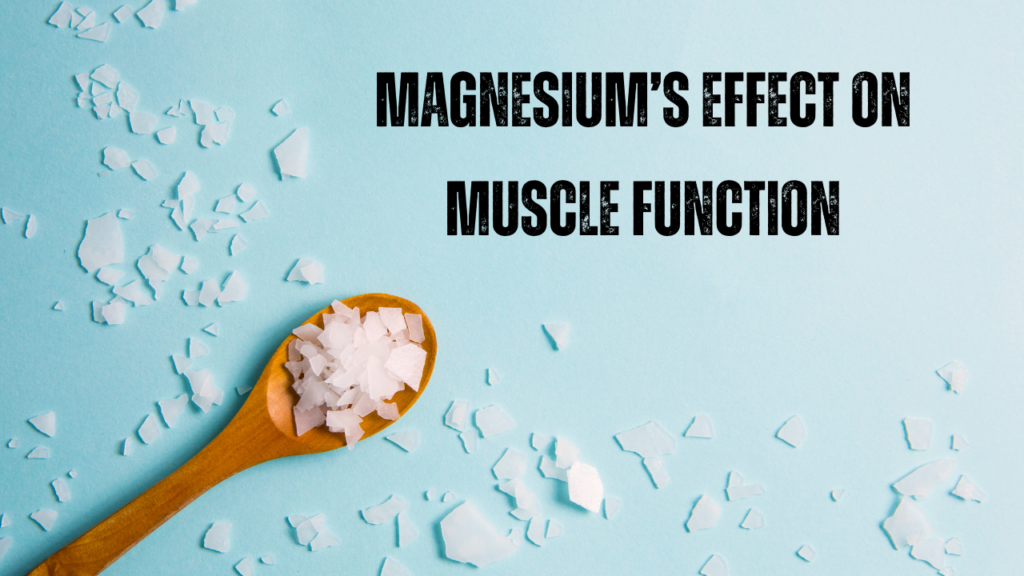Magnesium for Muscle Pain: How to Use It Right

Introduction to Magnesium and Muscle Pain
Muscle pain can be caused by a range of factors, from strenuous workouts to underlying health conditions like fibromyalgia. One often overlooked solution is magnesium. This essential mineral plays a pivotal role in the proper functioning of your muscles and nerves. But can magnesium truly help with muscle pain? The short answer is yes. Magnesium helps regulate muscle contractions, and a deficiency can lead to muscle cramps and discomfort.
Understanding Magnesium’s Role in the Body
Magnesium is responsible for over 300 biochemical reactions in the body. It’s crucial for nerve function, energy production, protein synthesis, and muscle contraction. When magnesium levels are low, your muscles can become tight, leading to cramping and pain. By increasing your magnesium intake, you can help prevent muscle cramps and reduce inflammation.
Why Magnesium Helps With Muscle Pain
When your body experiences muscle pain or tightness, it’s often because of imbalanced mineral levels. Magnesium works to regulate the levels of calcium in your muscles, preventing them from contracting too much or not relaxing enough. By balancing these minerals, magnesium helps maintain smooth and efficient muscle function, reducing pain and stiffness.
The Science Behind Magnesium and Muscle Relaxation
Magnesium plays a central role in muscle function by promoting relaxation. It works in tandem with calcium, which is responsible for muscle contraction. Magnesium acts as a “brake” on calcium, helping muscles relax after contracting. This balance is crucial for preventing muscle spasms, cramps, and persistent pain.
Magnesium’s Effect on Muscle Function
When magnesium is abundant in the body, it aids in the smooth contraction and relaxation of muscles. This prevents overstimulation, which can lead to muscle tension and discomfort. Magnesium also influences the production of ATP, the energy molecule that powers your cells, including muscle cells. Without adequate magnesium, your muscles may fatigue more quickly, leading to soreness.

The Connection Between Magnesium Deficiency and Muscle Cramps
Magnesium deficiency is directly linked to muscle cramps. When magnesium levels are low, the body may struggle to regulate calcium in muscle cells, causing contractions that are too forceful or prolonged. This imbalance can lead to sudden, sharp muscle cramps—especially during physical activity or at night. Increasing magnesium intake is an effective way to reduce the frequency and intensity of these cramps.
Different Forms of Magnesium
There are several ways to introduce magnesium into your body to relieve muscle pain. Some of the most popular forms include:
Oral Magnesium Supplements
Magnesium supplements are a common and effective way to boost magnesium levels. Available in several forms—such as magnesium citrate, magnesium oxide, and magnesium glycinate—these supplements can help restore magnesium balance and reduce muscle pain.
Topical Magnesium Applications
Magnesium can also be absorbed through the skin, making topical treatments such as magnesium oils, creams, and Epsom salt baths another popular option for muscle pain relief. These products deliver magnesium directly to the affected area, providing localized relief.
Magnesium-Rich Foods
Incorporating magnesium-rich foods into your diet is an excellent way to increase your magnesium levels naturally. Foods like spinach, almonds, avocados, and bananas are packed with magnesium, helping to maintain muscle function and prevent cramps.
How Magnesium Relieves Muscle Pain
Magnesium helps relieve muscle pain in two primary ways: its anti-inflammatory properties and its muscle-relaxing effect.
Magnesium’s Anti-Inflammatory Properties
Magnesium has been shown to reduce inflammation in the body. Inflammation can exacerbate muscle pain, making it more intense and longer-lasting. By reducing inflammation, magnesium helps ease muscle discomfort and promotes healing.
The Muscle Relaxing Effect
Magnesium’s ability to relax muscles is a key reason it’s effective in treating muscle pain. By promoting muscle relaxation and preventing excessive contraction, magnesium can help alleviate pain caused by muscle spasms or tightness.
Magnesium Dosage for Muscle Pain Relief
Recommended Daily Dosage
The recommended daily dosage of magnesium varies depending on age, sex, and individual health factors. For most adults, the recommended intake is between 310-420 mg per day. However, those dealing with muscle pain may benefit from higher doses, but this should always be discussed with a healthcare professional.
How Much Magnesium for Muscle Pain Relief?
For muscle pain relief, many people find that taking around 400 mg of magnesium daily can be effective. However, the optimal dosage depends on the individual’s needs and tolerance. Some people may experience relief with lower doses, while others may require more. Always start with a lower dose and gradually increase if needed.
Best Ways to Use Magnesium for Muscle Pain
Magnesium can be used in a variety of ways to relieve muscle pain. Let’s explore the most effective methods:
Oral Supplements: Dosage and Timing
Magnesium supplements can be taken in the form of pills, powders, or liquid. To maximize the effectiveness, it’s best to take magnesium in the evening, as it can also promote relaxation and better sleep. Always follow the dosage recommendations on the supplement label or consult with a healthcare provider.

Topical Magnesium: Epsom Salt Baths and Creams
Topical magnesium products like Epsom salts are a great option for localized pain relief. When dissolved in warm water, magnesium is absorbed through the skin, helping to relax muscles and soothe pain. Applying magnesium oil or cream directly to the affected area can also provide quick relief.
Dietary Sources: Magnesium-Rich Foods
Incorporating magnesium-rich foods into your diet is an excellent long-term strategy for muscle health. Foods like leafy greens, nuts, seeds, and legumes are all rich in magnesium, helping to support muscle function and prevent cramps.
When to Use Magnesium for Muscle Pain
Magnesium can be beneficial for both acute and chronic muscle pain. However, the approach may differ slightly depending on the situation.
Acute vs. Chronic Muscle Pain
For acute muscle pain, such as soreness from a workout, magnesium can help by reducing inflammation and promoting muscle relaxation. For chronic pain, such as that caused by conditions like fibromyalgia or muscle spasms, magnesium can be part of a long-term strategy to manage and reduce pain over time.
Combining Magnesium with Other Pain Relief Strategies
Magnesium works well in combination with other pain relief strategies. For example, using it alongside stretching, heat therapy, or other anti-inflammatory treatments can enhance its effectiveness.
Potential Side Effects of Magnesium
While magnesium is generally safe, it’s important to be aware of potential side effects, especially when taking high doses.
Common Side Effects and How to Avoid Them
Common side effects of magnesium supplements include diarrhea, stomach cramps, and nausea. To avoid these, start with a low dose and gradually increase your intake. If you experience persistent side effects, consult a healthcare provider.
Precautions When Using Magnesium for Muscle Pain
If you have kidney problems, it’s essential to consult with a healthcare professional before using magnesium supplements, as the kidneys are responsible for clearing excess magnesium from the body.

Conclusion
Magnesium is a powerful tool in managing muscle pain, whether it’s from cramps, soreness, or chronic muscle conditions. By understanding how magnesium works in the body and choosing the right form of supplementation, you can effectively reduce muscle pain and enhance overall muscle health. Remember, consistency is key, and it’s always a good idea to consult a healthcare professional before starting any new supplement regimen.
FAQs
1. Can magnesium completely cure muscle pain?
Magnesium can significantly reduce muscle pain and prevent cramps, but it may not completely cure all types of muscle pain. It’s most effective when used as part of a comprehensive pain management plan.
2. How quickly can magnesium relieve muscle cramps?
Magnesium can provide relief within a few hours, especially when used in topical forms like Epsom salt baths or magnesium oils.
3. Can magnesium help with muscle soreness after exercise?
Yes, magnesium is excellent for alleviating muscle soreness caused by exercise, as it helps to reduce inflammation and relax muscles.
4. Is there a risk of taking too much magnesium for muscle pain?
Yes, excessive magnesium intake can lead to diarrhea, nausea, and abdominal discomfort. Stick to the recommended dosages to avoid side effects.
5. What are the best magnesium-rich foods to eat for muscle health?
Spinach, almonds, avocados, and bananas are all excellent sources of magnesium that can help maintain healthy muscles and prevent cramps.
